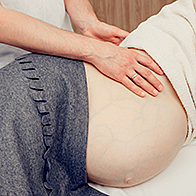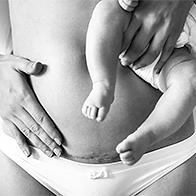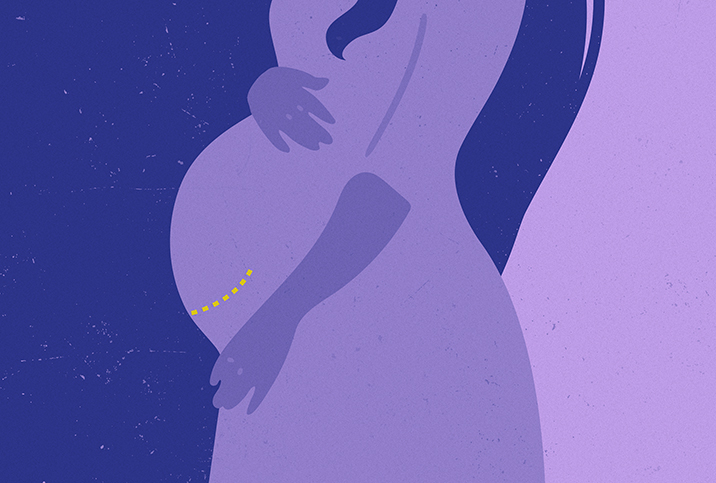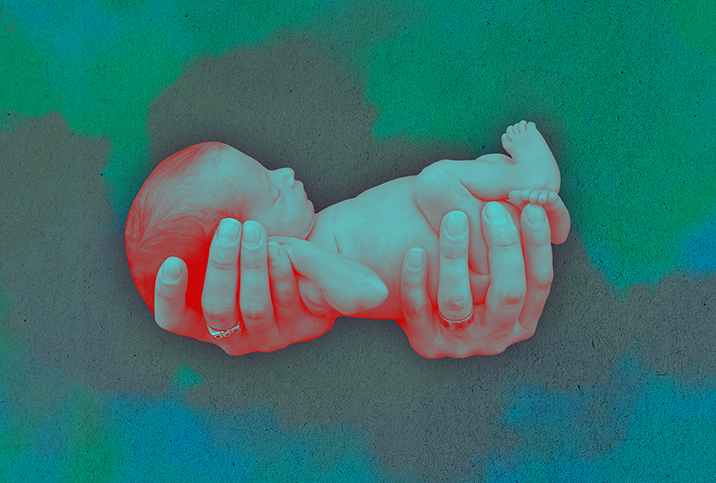What You Need to Know About Giving Birth to a Breech Baby

A breech baby—when the fetus's feet are positioned to come out of the vagina first—is common during the second trimester of pregnancy. Usually by the 37th week, however, the baby naturally turns to a head-down position to prepare for birth.
Only 3 percent to 4 percent of breech pregnancies result in a breech birth where the birthing parent has to then weigh their delivery options.
"If this is your first baby in the breech presentation at 36 weeks, the chance of the baby turning itself naturally before you go into labor is about a 1 in 8 chance," said Gareth Nye, Ph.D., a maternal and fetal health expert, lecturer of physiology and program leader for medical science at Chester Medical School in England.
The arrival of the 37th week, however, lowers the likelihood of the baby turning itself and it's best to assume the fetus will remain in breech, said Emiliano Chavira, M.D., an OB-GYN and maternal-fetal medicine specialist in Los Angeles.
While most babies that reach term in the breech position are healthy, there are some risk factors that can cause the fetus to be in this position.
"Sometimes there is an obvious cause behind the persistent breech presentation, such as large uterine fibroids that distort the shape of the uterine cavity, or uterine anomalies such as bicornuate uterus, a heart-shaped uterus," Chavira explained. "In a small percentage of cases, the baby may be breech due to a fetal problem. These can be structural problems that make it hard for the baby to move around normally or neurologic problems that impair normal fetal movements."
Techniques for getting out of breech
Several techniques, including inversion exercises, hypnosis, hot/cold abdominal therapy and moxibustion, a traditional Chinese medicine therapy, may help the baby get into a head-down position.
Chavira advises women to start paying close attention to fetal position between 34 and 37 weeks. Being active and exercising regularly, as well as doing yoga and stretching exercises, during pregnancy might help the baby turn around.
"Chiropractors perform a technique known as the Webster technique to help loosen up the pelvis and associated muscles. Some acupuncturists offer techniques to help turn the baby. If the baby is still presenting breech at 37 weeks despite trying all of the above, then a procedure can be attempted known as external cephalic version, or ECV," Chavira said.
Performed by midwives and physicians, ECV is a physical intervention attempting to turn the baby by pressing on the abdomen. The success rate is around 53 percent, which can vary due to technique and skill and experience levels.
Even if an ECV is successful, the baby can still turn back to breech. However, the chances of that are very low, said Rixa Freeze, Ph.D., the founder of Breech Without Borders, a nonprofit organization in Indiana dedicated to breech training, education and advocacy.
"For those babies who turn and stay head-down after ECV, they do have a higher rate of dysfunctional labors than babies who turned head-down spontaneously. We don't know why this is," she said.
Breech delivery options
When preparing for a breech delivery, a decision must be made on whether to proceed with a vaginal birth or a cesarean section.
"Current practice in many countries is to schedule a C-section at 39 weeks when a baby is breech. However, this means that some babies that may have turned after 39 weeks are never given the chance," Freeze said.
According to Freeze, obstetric residents haven't been taught how to deliver breech vaginal birth—apart from a breech extraction of a second twin—since the early 2000s.
"This has caused a vicious cycle where vaginal breech birth has become less safe due to lower experience levels, but gaining experience is nearly impossible due to the perception that it's too dangerous," she said.
"In addition, many hospitals have banned vaginal breech births, preventing experienced providers from attending vaginal breech births even though they are skilled and willing," she said.
Chavira stated that 60 percent to 70 percent of vaginal breech births happen spontaneously with the babies falling out of the birth canal, leaving 30 percent to 40 percent to potentially become a complicated birth, which can be very risky without the attendance of a skilled breech birth specialist.
While most births go seamlessly, a small percentage of women experience complications whether they're having a head-first vaginal birth, a breech birth or a C-section.
When considering your breech delivery options, Chavira warned that both vaginal breech birth and cesarean section can carry potentially serious risks.
Summarizing the possible threats of vaginal breech birth, he listed:
- Maternal risks, including fever, infection, hemorrhage and vaginal tears, are essentially the same as during a head-down birth.
- The baby has a small risk of injury during delivery. Minor injuries include bruises to the tailbone and genitalia; moderate injuries can be bone fractures, such as upper arms or collar bone, or temporary nerve injuries in the arms. Severe injuries are rare but can include permanent nerve injuries, brain damage or death.
Compared with C-section or head-down birth, vaginal breech birth bears a higher statistical risk of the baby suffering severe injuries.
"Based on recent studies over the past 20 years, the risk of fetal/newborn death with vaginal breech birth is about 1 in 500, compared to about 1 in 1,000 for a head-down birth and about 1 in 2,000 for a cesarean birth," Chavira said. "In the short term, the risk of severe injury to the breech-presenting baby is higher with a vaginal birth compared to a cesarean section. However, it is important to consider that the cesarean section increases the risk of severe complications in the next pregnancy, both maternal and fetal."
Chavira advised also taking into consideration the beliefs, values and preferences of the family and, most importantly, the child-bearer regarding the process of childbirth, as these factors also play a relevant role in planning a birth.




















